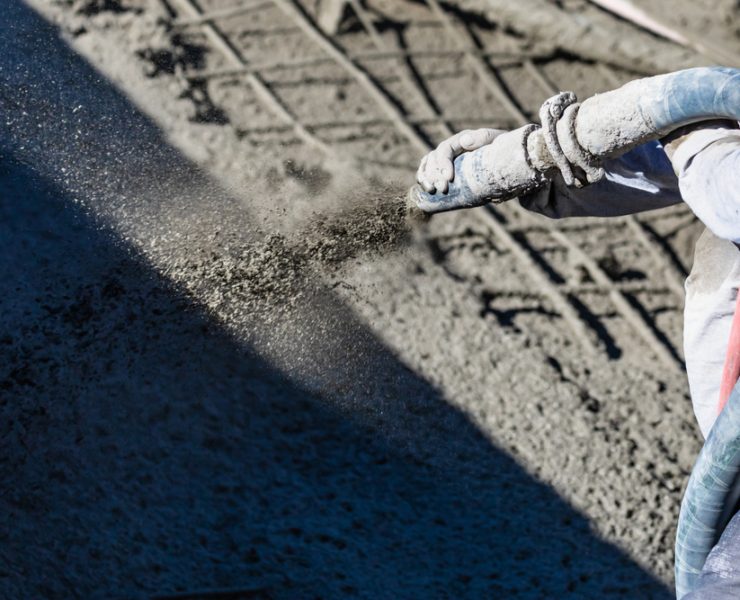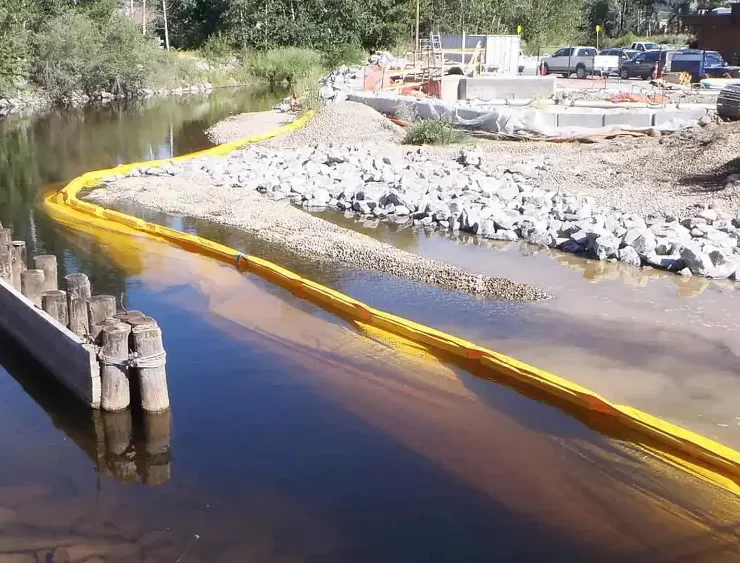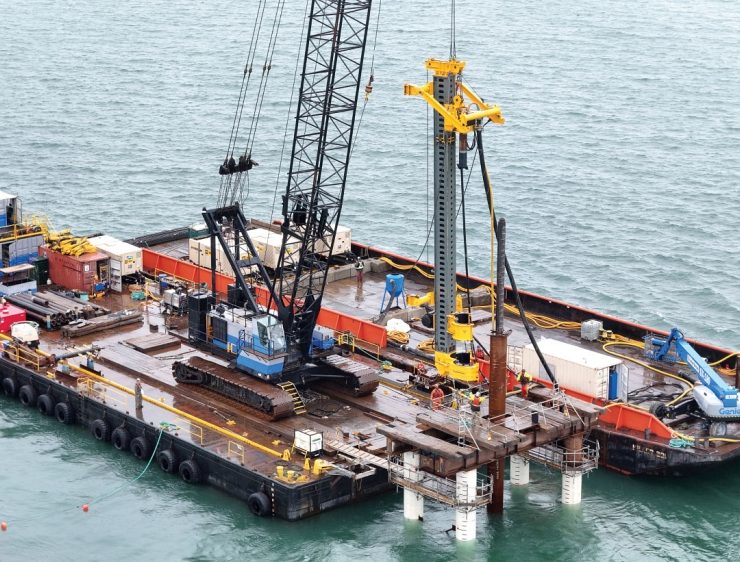Deck Barge Safety – Part I
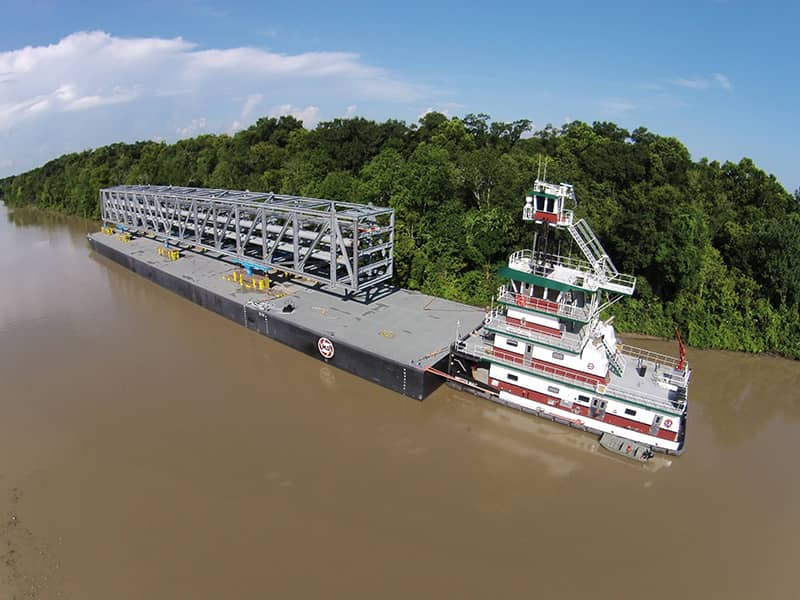

Thousands of deck barges are currently in operation within the United States, alone. Also known as flat deck barges, deck barges are used for both offshore and inshore construction and transport. They can handle heavy equipment such as excavators and floating cranes. Like most construction sites, there are many dangers that workers need to be aware of. In part one of our Deck Barge series, we discuss how to prevent slips, trips, and falls.
By the Numbers
The Occupational Safety and Health Administration (OSHA) advises that between 1997 and 2006, hundreds of employees were killed on barges. (305 workers on barge / tow combination vessels.) There were 379 fires or explosions where 14 workers died. As usual, most accidents can be avoided by following simple safety procedures. We’re talking the right pair of shoes and proper ladder usage kind of simple.
Real Life Incidents
Not everyone can learn from others’ experience, but let’s give it a shot. Here are a couple of incidents related to slips, trips, and falls reported to OSHA:
- A worker tried to go over to another barge using a barge rope. Though the piece of equipment he was carrying weighed less than five pounds, he lost his balance. He fell into the water and drowned.
- This worker was holding a sheet of plywood when he stepped back, tripped on a board, and fell into the water.
In both cases, the workers were not wearing life vests and drowned. Yes, rescue attempts were made. They were not successful. A simple piece of safety equipment – a life vest – could have saved both of these men.
Slips, Trips, and Falls
How you store equipment, what you wear, and how you walk impact your safety. Keeping the deck barge clean and organized reduces the risk of slipping, tripping, or falling. Nearly all the ways you can reduce risk are easy and inexpensive to do. Here are some specific safety tips to avoid slips, trips, and falls.
Slips
You’ll slip and fall when the surface you’re walking upon is slippery. Or your foot slides on a piece of debris. Whether the slip causes you to fall backwards or forwards, it’s going to hurt. The obvious way to avoid slips is to keep the deck clean.
- If you see a spill, clean it up right away.
- Repair leaks immediately.
- Keep the deck clear of debris.
- Keep the deck dry.
- De-ice the deck, when needed.
- Non-skid protective deck compound should be applied to the deck instead of standard paint.
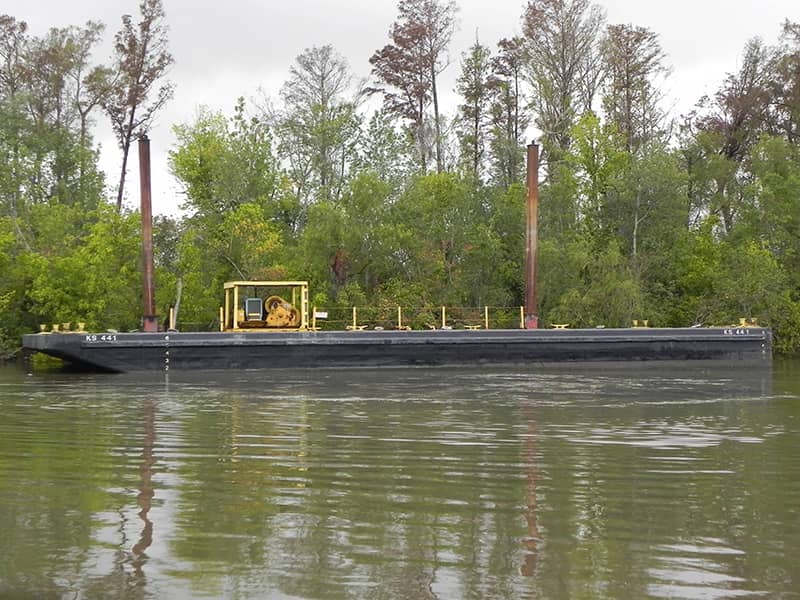
Safe Shoes
The right footwear is critical. Ensure that:
- Your shoes are the proper size. Too big and they can cause you to trip; too small and the discomfort can be a distraction while you’re walking.
- Slip-resistant soles are best.
- Keep them clean. Yes, working on these barges can be a dirty job. But don’t let mud, snow, ice and the like build up on your shoes. It takes about 10 seconds to scrape off any gunk.
Trips
You can avoid tripping in a few ways:
- Walk slowly around hazards; otherwise move at a normal pace.
- Wear the right shoes. (Yes; we’re repeating this one.)
- Properly secure any materials or equipment that must remain on deck.
- Put safety tape and / or signage around any hazardous area.
- Secure ramps used for loading and unloading.
- Stairs, doorways, and gangways should be clear.
Falls
OSHA defines two types of falls: same level-falls and elevated falls. A same-level fall is the result of a trip or slip. Elevated falls happen on ladders, stairs, equipment, uncovered holes or hatches, etc. Here’s how to avoid falls:
Learn to Walk
- You don’t have to walk like you’re 100 years old, but don’t rush.
- Don’t put your hands in your pockets while walking. If you’re hands are cold, wear gloves.
- If you’re in icy conditions, slow down. Of course, by now you know to wear the right foot gear.
- Don’t jump over to another barge. (Stop showing off.).
- We know they told you this in elementary school: Don’t run!
- Don’t climb on stuff – get a ladder.
- Try to avoid turning sharply or stopping suddenly.
Watch Your Step
- Avoid stepping on hatch covers.
- Use gangplanks with guardrails to avoid falling on pilings.
- Cover or guard hatches and deck holes.
- Do not use pigeon holes to access work areas.
- Don’t walk on the edge of a barge that doesn’t have guardrails.
- Make sure you have enough light to see where you are walking.
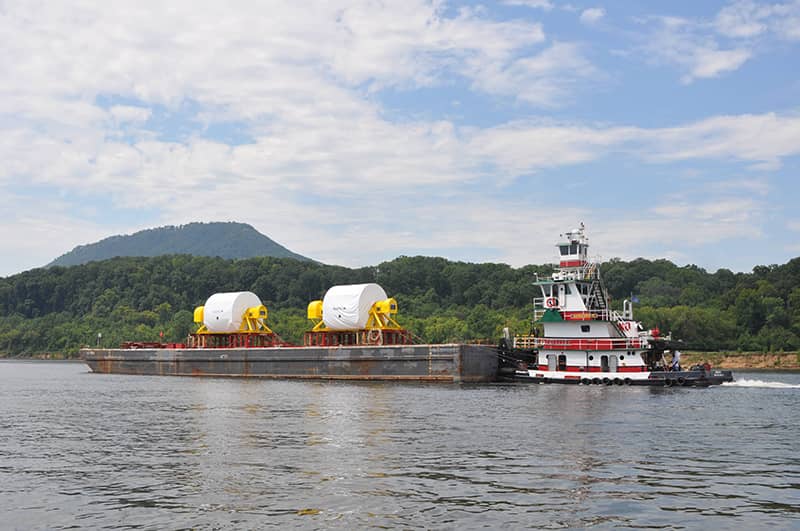
Ladder Safety
A lot of injuries are caused by the improper use of portable ladders. Here’s the right way to work on a ladder:
Worker-related
- Only one limb at a time should be in motion. For example, if one hand is moving, the other hand and both feet should be on the ladder.
- Rather than overextending your body to reach something, get a taller ladder. Or a taller worker.
- While climbing, stay centered on the middle of the step.
- Move the ladder over rather than excessively leaning over the side of the ladder.
- Use something to hold tools like a belt, bag, or hand line. This way your hands remain free while you are on the ladder.
- Did we mention appropriate footwear? Leave the sandals in your beach bag.
Equipment-related
- Use the right ladder for the job. Don’t use a step ladder as if it were a portable rung ladder.
- Correctly position the ladder. It should go out vertically from the surface one foot for every four feet in height.
- Make sure the ladder itself won’t slip or slide.
- Side rails should extend three foot or more above the area you’re trying to reach.
- Secure the ladder to keep it from moving should the barge move. Having a second worker available to hold the ladder is best.
- Don’t use metal ladders near electrical equipment, such as conductors.
Falling Overboard
If you slip, trip, or fall into the water, you were probably pretty darn close to the edge of the barge when it happened. Which means you should have been wearing a personal flotation device (PFD). The deck barge should have OSHA-compliant railing. But even if it does, it’s safer to just don your PFD. Here’s what you need to know about PFDs:
- PFDs are also known as life jackets, buoyant work vests, or life preservers.
- Your PFD should be U.S. Coast-Guard-approved.
- If there is a chance you could fall in the water, ensure that your PFD is fully closed.
- You don’t have to wear a PFD inside a cab or equipment compartment, but you have to have quick access to one.
- There should be at least one PFD available for every worker on the deck barge.
- Any vessel 26-feet or longer is required to have minimally one ring life buoy at the ready.
- Each PFD should have approved retro-reflective material on it.
- PFDs should be regularly inspected to ensure they are still in good condition.
Rescue Procedures
Rescue procedures should include the use of stand-by boats, rope of at least 90 feet in length, life rings, and ladders that can extend three feet above and below the surface of the water.
Work crews should regularly practice “man overboard” drills. In particularly frigid regions, the use of immersion suits is highly recommended. (This is because of the higher risk of hypothermia.)
Next Up
In Deck Barge Safety Part II, we’ll discuss other hazards on deck barges, including fires and working in enclosed spaces. Meanwhile, follow the safety procedures to avoid slips, trips, and falls. Remember to go buy a great pair of work shoes or boots. You’re worth it.
Why is preventing slips, trips, and falls crucial on deck barges, and what are some common incidents reported to OSHA?
Why is preventing slips, trips, and falls crucial on deck barges, and what are some common incidents reported to OSHA?
What are essential safety measures to prevent slips, trips, and falls on deck barges, and why is the right footwear important?
Essential safety measures include keeping the deck clean, using slip-resistant soles, securing materials, and wearing the right-sized footwear to prevent accidents and ensure worker safety on deck barges.














